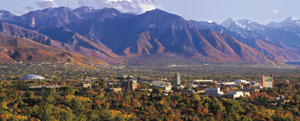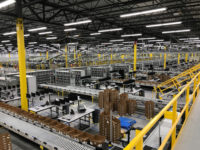The University of Utah is looking to renovate its 40-year-old College of Architecture + Planning building into the nation’s first institutional facility to meet net-zero-energy standards.

The announcement was made by Brenda Scheer, dean at the University of Utah College of Architecture + Planning, and Joerg Reugemer, associate professor, during their presentation at a sustainability conference in Salt Lake City on April 8.
The university’s concrete building was constructed with single-pane windows during a time when energy was cheap, Scheer says. “Our plan is to cut the building’s energy use by 80%, improve water conservation and recycling efforts and install monitors and dashboards that give students feedback on their energy consumption.”
“We don’t want to just check off a number of boxes on the LEED-certification list, we want this building to truly be net-zero, which will push us past the LEED standard and any other third-party sustainable verification,” says Brad Baird, U of U director of development.
“We teach our students about sustainability and being green, so when looking to update our facilities, we decided we needed to preserve the 1960s architecture of the building while improving what we have,” Baird says. “We want our building to be an example of sustainability to our students and to all state institutions nationwide.”
Net-Zero ThemeThe net-zero announcement coincided with the theme of the 5th annual Sustainable Building Conference attended by nearly 400 professionals from the building and design industry. A number of sessions addressed how to dispose of construction waste and ways to extend the lifespan of existing buildings throughout the Intermountain West.
“There are two aspects of current energy consumption and CO2 production in the building industry,” says Ryan Smith, director of Integrated Technology in Architecture Center at the U of U, who presented theories on designing for disassembly to conference attendees.
“Construction energy comprises about 10% of a building’s energy consumption, while operational energy consumption is at 90%. As we move closer to net-zero buildings, the issue of construction-energy consumption is going to come to the forefront.”
The college has engaged a volunteer technical committee of more than 30 architects, planners, engineers and policy and facilities experts to advise the planning process and provide technical expertise. Baird expects a study on modernizing the building’s energy consumption to be complete in September.
“Our hope is to save the embodied energy of the building,” says Baird. “If we truly want to be green, we need to look at the entire carbon footprint of this project—which would increase with new construction.”
A renovation of this size would result in considerable savings of materials and energy, with positive economic and environmental consequences, Salt Lake City Mayor Ralph Becker said at the conference. He believes that the building will be the first among higher education to achieve net-zero-energy consumption.
As the university waits for the building study to finish, it will work on raising private funds for the renovation. Construction is expected to start next year or at the latest by 2012, Baird says.



Post a comment to this article
Report Abusive Comment